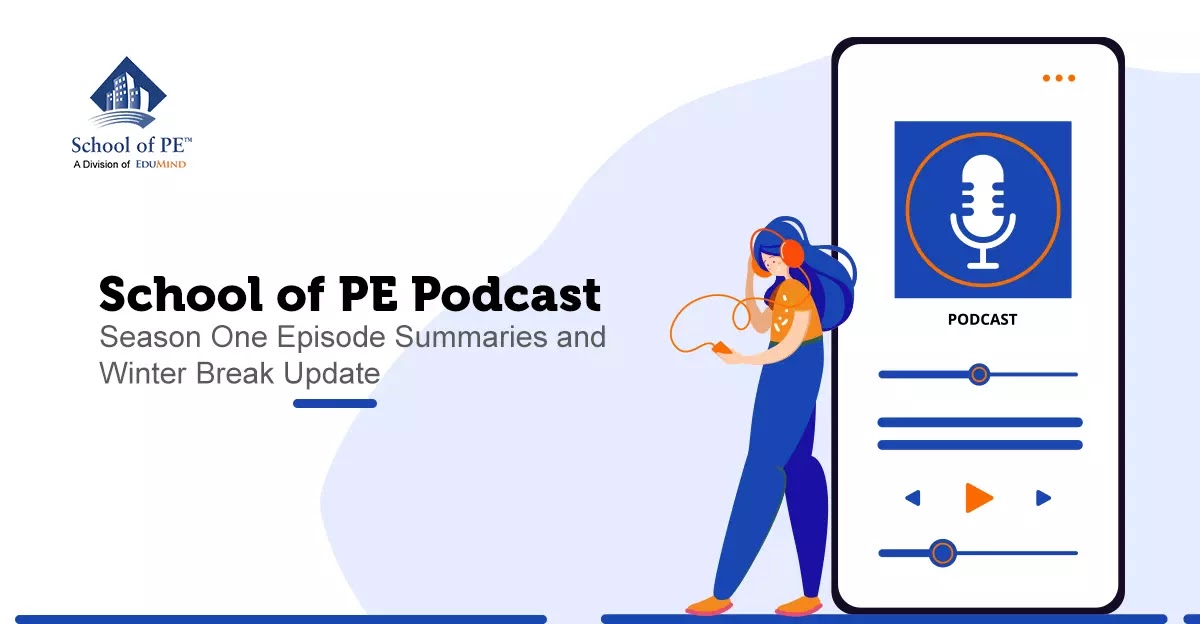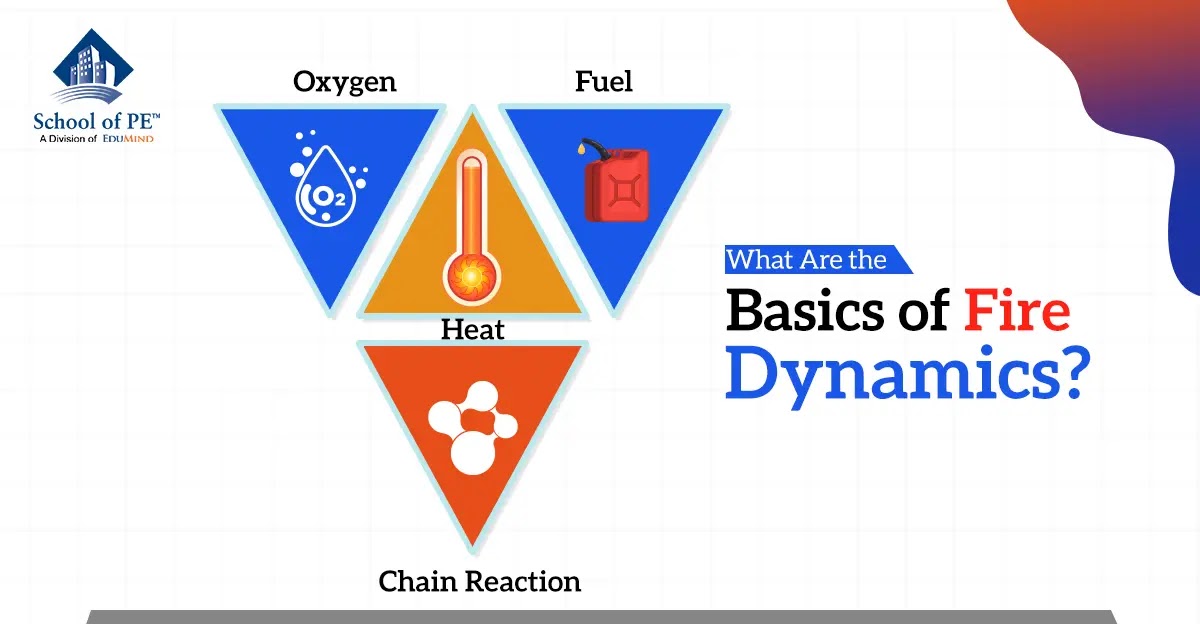It's no secret that the PE Environmental exam is difficult. If you are curious about taking this exam or haven't passed it after multiple attempts, you're not alone-in fact, the exam took me three tries to pass! In this blog, I will share why I believe I didn't pass my first two times as well as the tips that aided in my eventual success.
Even though I was getting ready to take the last pencil-and-paper PE Environmental exam before it transitioned, these tips will also apply when preparing for the computer-based testing (CBT) exam or even a completely different discipline altogether.
The First Two Tries
When I took the PE Environmental exam for the first time in April 2017, I had been out of school for nearly ten years and had to refresh my skills on many topics. I decided to start studying five weeks before the exam, spending my evenings preparing on the couch while my fiance watched TV. I didn't work through many problems-I thought having a good grasp of engineering theory was all I needed.
When results came out the next month, I saw the dreaded red box on the NCEES website: I had failed. Undeterred, I signed up for the next exam. Since I'd been close with my first attempt, I thought I should be able to pass with no problems! I continued studying and reading my engineering books to get a conceptual understanding of the material.
I was devastated when I learned I had failed a second time - and with an even lower score.
How was this possible?
The Third (Successful) Try
When I walked out of my testing site the third time, I felt confident but also concerned that somehow, I could have failed this exam again. As soon as I heard results had been released, I sat on the couch and made my husband sit next to me for emotional support as I logged into the NCEES website. Words cannot describe the feelings of pride and elation I experienced when I saw that green box indicating I had passed. My journey to becoming a PE was finally over! Celebrating this milestone is one of my happiest memories.
Now, you may be wondering, how did she do it?
After spending time not only processing but also grieving my two failures (which involved a lot of retail therapy and sweets), I ended up completely overhauling my study technique and preparing to start a new journey to success. I have summarized this plan into the following five steps:
Tips for Success
1. Prepare your exam battle plan.
If you're going to conquer this exam, you need a solid battle plan-and the first component of any successful plan is a schedule. Plan a realistic study schedule that you will feel comfortable achieving by the test date. I knew that for my third try, I wanted to study for six months and/or for 200 hours (note: this number will be different for everyone). I started studying slowly and ramped up the intensity with each passing month. By the last month, I was studying both before and after work.
Everyone is different (see Tip #4) so just because someone else studied X hours, it doesn't mean that you need to study that same amount to pass the exam. You know your study habits and motivators, so focus and rely on what you know will work best for you. I knew that I would feel anxious about my chances of passing the exam unless I met my study goals, so I kept a spreadsheet of my study hours to hold myself accountable and give myself the additional peace of mind that I was meeting my targets.
An important component of a study schedule is rest. If you're keeping track of your study hours, increasing the duration of your study sessions can be tempting, especially as you get closer to the exam date. Be mindful of taking breaks and resting-sitting in a chair for three hours when you're unfocused and exhausted is not productive. Take breaks, grab a bite to eat, or try moving around until you feel more energized. Be sure to build rest days into your plan.
The next component of your battle plan is study location. Unless you live by yourself, you're likely sharing your home with other people like your spouse, roommates, children, and/or parents, etc. Now, finding alone time to study may be challenging. During my third attempt to pass this exam, I knew I could not study in front of the TV anymore. Although the empty spot on my couch taunted me every night, I lugged all my books to our kitchen table, opened Spotify's "Perfect Concentration" playlist, and studied there. Minimizing my distractions helped me focus on the material and I had much higher quality study sessions.
Maybe studying in your home is too distracting for you. Can you pick a quiet conference room at work to study during lunchtime? Or maybe you need background noise to study, like in a coffee shop. Again, you know yourself the best. Consider your study habits and needs and ensure you are studying in an environment that is optimal for your learning.
The last component of your plan is making sure you are ready for exam day! Choose a date that you will stop studying and stick to it to give yourself a mental break. Just like you wouldn't want to run a 10-miler the day before a marathon, you want to make sure you're mentally refreshed before taking this exam. For my last attempt, I stopped studying early in the week and even took the day off before the exam to sleep in, work on a craft project, and relax.
For the day of the exam, do you know where the testing site is? Where parking is? Whether you are able to bring lunch on-site? What time you need to report to the exam site? These are all details that you should figure out well in advance of the test date to avoid any unnecessary surprises. Read the NCEES Examinee Guide carefully to ensure you're not bringing anything inside that may break the rules.
For my last attempt, I had my husband drop me off at the exam site. We had a hard time finding the parking lot since the gates all appeared to be closed, and based on how many cars we saw circling the site, we weren't the only ones. Finally, he dropped me near a group of confused examinees standing next to a fenced area. We may or may not have had to physically roll our suitcases and ourselves under a gap in the fence to get inside the testing center. You want to avoid these fun surprises on the day of the exam.
2. Don't take the exam during major life events (if you can help it).
While preparing for my second attempt in October 2017, I was six months away from my wedding and was busy with planning. We took our engagement photos three days before my exam. As you can expect, it was hard to focus on exam preparation while planning a wedding at the same time.
After I failed twice, I considered when to retake the exam. The next available exam date would be just a week after my wedding. I couldn't imagine juggling the final months of wedding planning and studying for the exam at the same time or sitting for the exam before I could even go on my honeymoon. Instead, I decided to put off my next attempt so I wouldn't even have to think about the exam until after I returned from my honeymoon.
I have no regrets with this decision-it allowed me to enjoy the final, frenetic stages of wedding planning with my husband and focus my efforts on decisions that really needed my undivided attention (Kelly or Moss Green napkins?) Once I returned from my honeymoon, I felt refreshed and ready to tackle the exam again.
I know life can throw us curveballs (pandemic, anyone?) and that you can't plan for everything. But if you already know that you have a big life event planned for a certain date (wedding, moving, etc.), really consider the timing of your exam.
3. Work problems, problems, and more problems.
I didn't work on many problems while preparing the first and second time. For my passing attempt, I scrapped what I had done before (reading engineering theory) and instead focused on practicing as many problems as I could-problems from textbooks, problems from the internet, I did them all. If a problem confused me, I'd consult my textbook to gain a better understanding of the material.
As my exam date crept closer, I started practicing my test-taking strategies while solving each problem and reworking problems until I could solve them easily. For example, I'd work through each problem as if I were taking the test using the resources available to me, instead of stopping to look up the answer. I practiced problems with my binder material. Now, though, since many of the exams are CBT, it will mean solving problems using solely the Reference Handbook. Make sure you have a good understanding of what formulas are included in this handbook and practice using it electronically while working through problems. You do not want to wait until exam day to review the Reference Handbook for the first time.
The more problems you do, the more you broaden your understanding of the topics. In fact, working through problems will increase your chances of passing. While taking my third exam, I encountered plenty of problems that I initially found confusing, but eventually felt comfortable answering due to the variety of problems I had prepared with.
If you've previously failed the exam, study your diagnostic report to determine your weaknesses. My personal career is in remediation, so I felt confident with that topic. But air and water? Not so much. I decided to focus my study on those two topics where I had been struggling.
4. Don't compare yourself to other people.
You surely have heard stories of examinees waiting until a week before the exam to study, skimming through their materials, and passing the first time. These people do exist and are infuriating, especially if you studied longer and still failed. I remember the smile I faked when one of my coworkers expressed how he had passed despite putting forth exceptionally little effort.
Remind yourself that everyone is different. Like I mentioned in Tip #1, craft a battle plan that is right for YOU. And if you're retaking the exam, don't be hard on yourself-many of us have had to retake this exam multiple times. Focus on strengthening your weaknesses and continue working actively towards your goal.
5. Use all available resources.
Take practice exams! Borrow prep materials from coworkers! Sign up for an exam prep course (and see whether your company will reimburse you for the expense)! Try studying with colleagues or friends!
During the preparation for my third attempt, I worked through practice exams and used old practice problems that colleagues had given me. I also frequented a forum called
Engineer Boards when I needed help with questions that stumped me, test-taking advice, and/or general camaraderie. Knowing that I wasn't alone was a confidence booster!
With a strong battle plan and focused study, you too will see the green box that indicates your success in achieving this milestone. Good luck on your journey to becoming an Environmental PE!
About the Author: Jennifer Stark
Jennifer Stark is an environmental engineer and is licensed in the state of Texas. She works from home in Indiana, where she lives with her husband and feisty dachshund/canine coworker. In her free time, she enjoys craft projects, playing music, and complaining about the cold weather.






